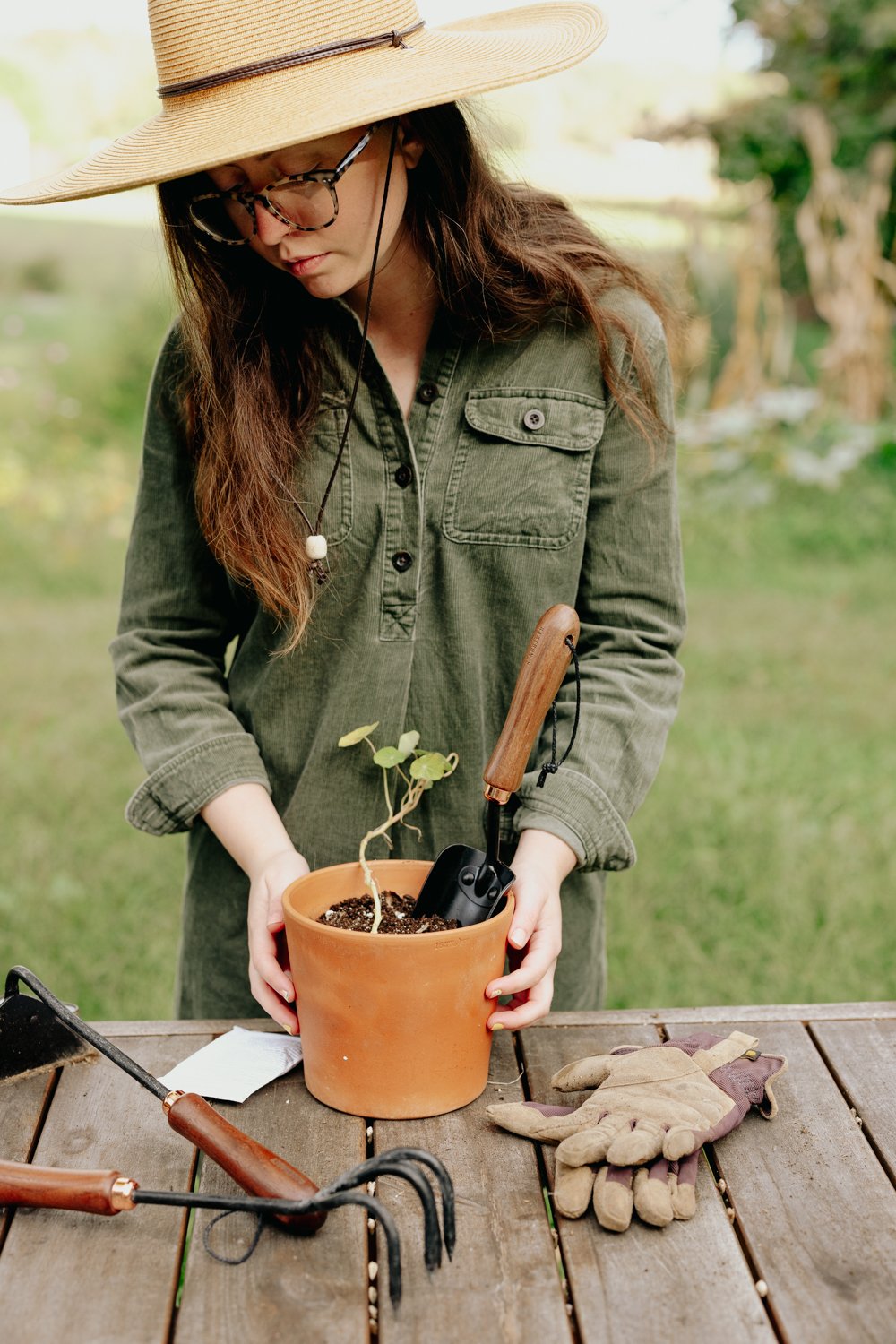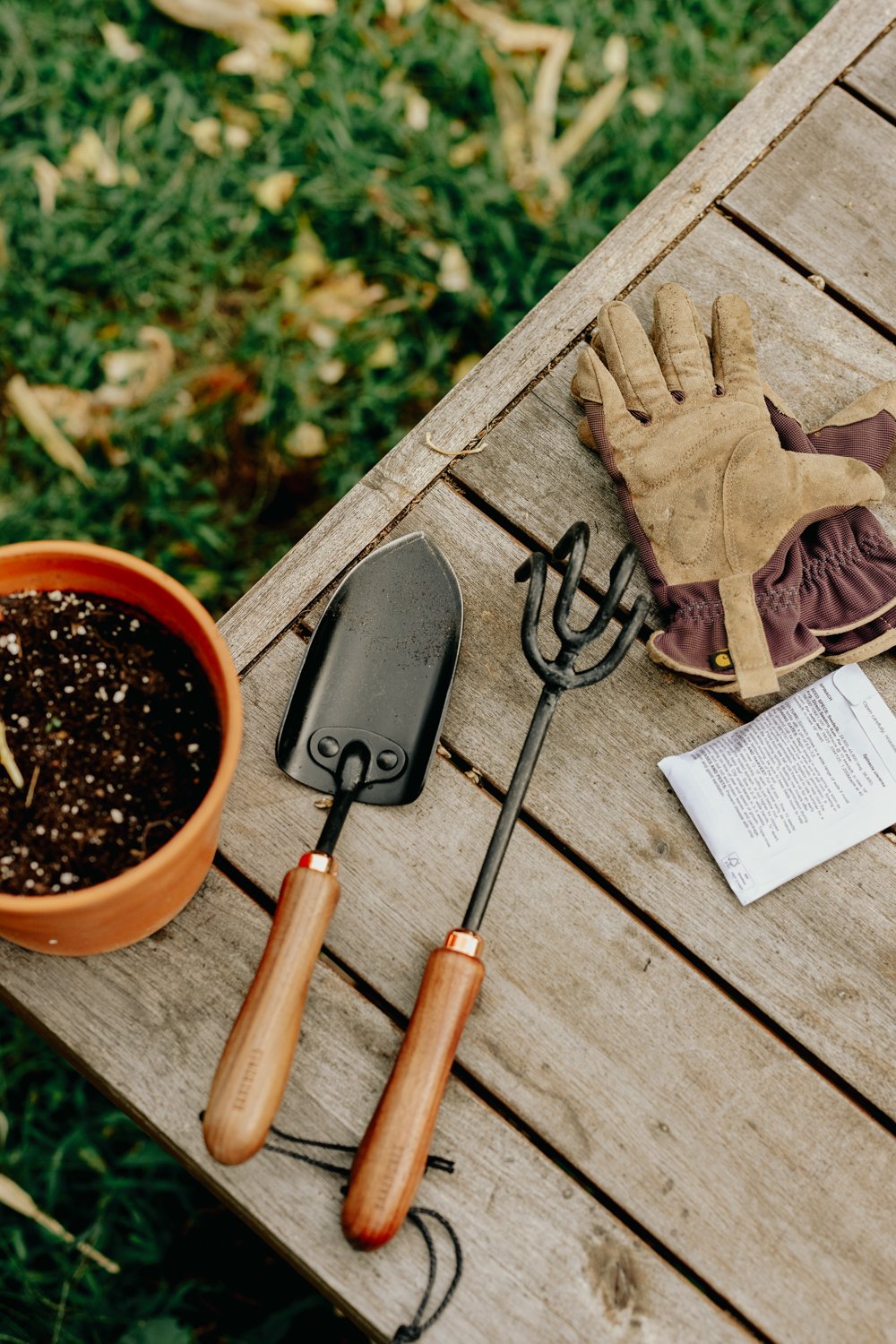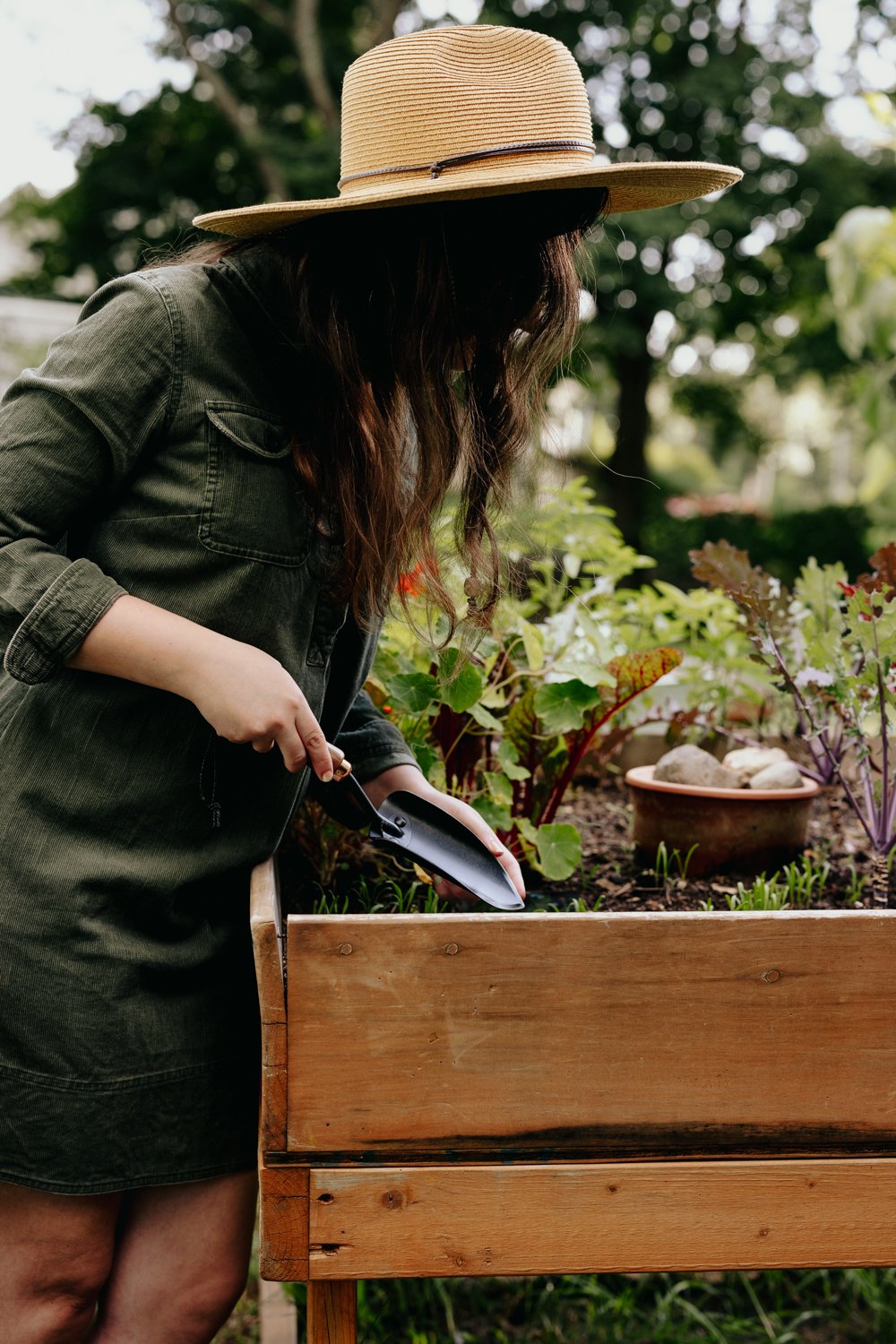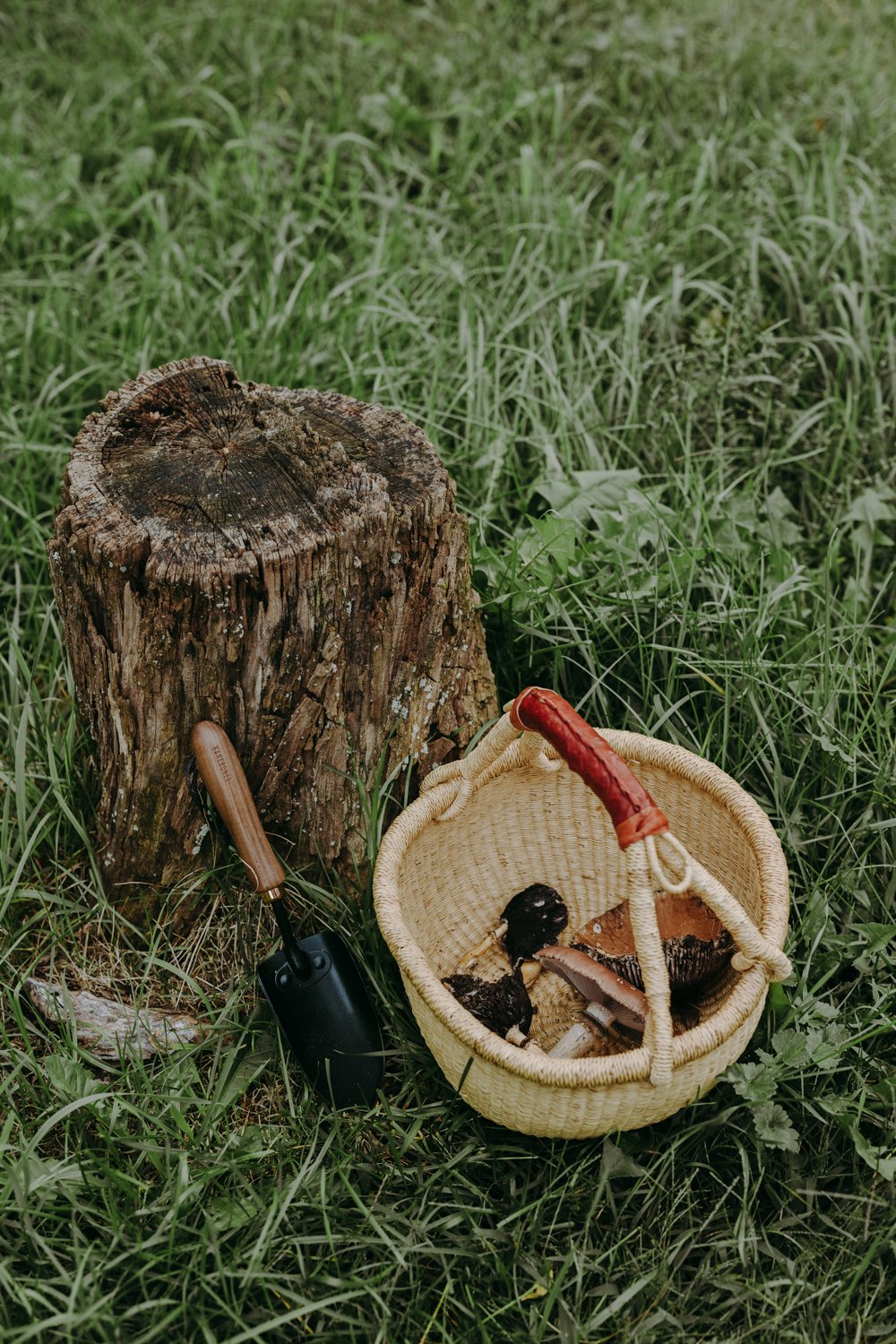BACKYARD GARDENING MADE SIMPLE
The garden tools I need to have in my shed
The planting of seeds by humans is believed to date back tens of thousands of years. Even before that, people cultivated food forests by protecting useful plants and eliminating those which provided them with no benefits.
In ancient times, a hole might be dug with a stone or stick, and water carried from a river in an animal bladder.
All that to say, it’s not the tools that make the garden. In the past, I have gardened quite happily with one shovel and a hand cultivator/hoe, but there’s no denying that having the right tool for the job makes the work of gardening easier and more enjoyable.
The Cottage Peach is reader-supported. When you purchase through links on our site, we may earn an affiliate commission at no additional cost to you. All opinions are our own.
What Tools Do You Need to Garden?
The planting of seeds by humans is believed to date back tens of thousands of years. Even before that, people cultivated food forests by protecting useful plants and eliminating those which provided them with no benefits.
In ancient times, a hole might be dug with a stone or stick, and water carried from a river in an animal bladder.
All that to say, it’s not the tools that make the garden. In the past, I have gardened quite happily with one shovel and a hand cultivator/hoe, but there’s no denying that having the right tool for the job makes the work of gardening easier and more enjoyable.
Are Garden Tools Expensive?
Garden tools are available at all price points. There will always be an endless chorus of marketers telling you this tool or that is better than the other, but remember you’re digging soil and planting seeds - not building a spaceship. You want something durable, but not necessarily fancy.
In some cases there is a real difference in quality between the cheaper and more expensive options. If you have a bit of money to spend on tools, the choice becomes, in which cases is an investment in a pricier tool a good financial decision?
But no matter what your budget is, there are sources other than the hardware store or internet from which to acquire tools. Just about every garage or estate sale has some which, while not brand new, have stood the test of time and have years of life still in them. Better yet, many older relatives have amassed a collection over the years and would be happy to pass them on to someone a bit more spry. Often these older tools are better made than what you’d find today. If they’re in rough shape, it’s easy enough to sharpen a hoe or replace a shovel handle.
These options not only save money, they mean less is produced and less ends up in a landfill.
My Favorite Gardening Tools
As I said, in the past I have gardened with two simple tools. But at this point, our gardening has expanded enormously, and we’re lucky enough to be able to carefully spend on tools which make our work easier and are durable enough to last a lifetime. Barebones Living is a favorite among gardeners because they check all these boxes - plus, they are a certified B Corp dedicated to protecting the environment. You can find my favorite selections from Barebones below:
Seed Starting Tools
One of the foundations of economizing in our gardening is seed starting. It saves so much money as compared to buying plants!
There are many cheap and accessible ways to start seeds. Egg cartons, newspaper, or even toilet paper rolls can be used to hold your soil.
How to Make Seed Pots From Toilet Paper Rolls
Step one is to rummage through your recycling for TP rolls. Better yet, skip the recycling bin and save them up throughout the year for use in the spring.
Once you have your empty rolls, just cut four 1 1/2” slits in one end of the tube and fold them over themselves to create a bottom. Fill with soil and your seeds and get growing!
Using a Soil Blocker to Start Seeds
These days, we use a soil blocker when starting seeds. It’s a simple tool that allows me to work a bit more quickly, which is helpful for those times when I’m not feeling well enough for a longer project.
Blocks are also great for the plants themselves. Because each block is planted directly into the garden, the roots are not damaged and the plants aren’t likely to experience any transplant shock, giving them a stronger start on life.
One potential drawback of this tool is that it might be difficult for someone with arthritis or other pain in their hands to squeeze the handle that releases the blocks from the mold, so that’s something to keep in mind.
How to Use a Soil Blocker
Soil blocking is really easy once you get the hang of it. You might read in a catalog or hear from another gardener that you need a fancy soil blend designed for soil blocking, and I’m sure it would be nice to have, but I’ll take the giant $15 bag of soil from Lowes please and thank you. I’m not about to ship $50 worth of soil to my house - call me lazy, or a bad gardener, but I never have and everything grows just fine.
Just take your soil, mix water in until it’s just a little drier than mud and get pressing. The trick is to really firmly compact the soil into the mold with your hand as hard as you can. The blocker will form a small divot on top into which you can plop your seed. Cover with a bit of loose soil, and that’s all there is to it!
Tools for Planting
There are endless options for digging a hole, and I’m sure you’re familiar with most of them. A shovel or spade is best for larger holes, but one tool I particularly like for planting seeds and seedlings is the Japanese Hori Hori knife.
Like any knife, it’s best to find one which has a full, or integrated, tang, which will make it much more durable. With a full tang, the metal extends the whole length and width of the handle.
Why Use a Hori Hori Knife for Planting?
A Hori Hori has multiple uses, including weeding and cutting roots and small branches, but in the case of planting, there are two things that make it the right tool for the job.
One is that the point is sharp, but wide enough that, with a twist of the wrist, you can cut a hole rather than just a slash in the soil. The second is that most Hori Hori knives are marked to show you the depth of your hole, which is really helpful when planting seeds.
Tools for Weeding
I’ve used hand cultivators and spades, Hori Hori knives, standing hoes, and shovels to weed over the years. I still prefer a shovel for very large weeds, but the tool I use most often to weed is this Japanese Weeding Hoe.
This hoe is very sharp. I use it to loosen the soil under and around the weed so I can easily pull it up and not lose any roots. The blade is also narrow enough to use around things I have planted without fear of damaging them.
Tools for Watering Plants
Not rocket science here, any container or hose will do, but I do have my favorites. I have some difficulties with most hoses, which basically come down to the fact that I have a chronic illness. Most hoses are quite heavy and tend to kink. So aside from it being difficult for me to pull them out or coil them back up because of the weight, I have to walk back and forth any number of times to straighten up the hose so the water can flow through it, which quickly exhausts me.
I’ve found two hoses that solve these problems for me.
Hoses That Make Gardening More Accessible
The Flexi Hose is a lightweight, expandable hose which does not kink. It’s available in lengths up to 150 feet and has solid brass connectors. We’ve had ours for three or four years now, and are very happy with it.
A more serious option if you’re looking to invest in a dedicated system is a Hoselink retractable hose reel. For me, this hose was worth every penny. Even with a lighter hose like the Flexi Hose, it can be difficult for me to pull the hose where I need it and then get it coiled back up. The Hoselink solves that problem by automatically retracting the hose when I give it a small tug. It still takes a bit of effort for me to pull it out to its full length, but it does not leave me fatigued the way other hoses do.
It comes with a wall bracket, and can be mounted on a pole or the side of your house. The longest length available for the Hoselink is 82 feet. I’d love a longer one, but it is definitely the hose to choose if you have a larger budget.
Pruning Tools
Like a lot of gardeners, I am fiercely loyal to my favorite pruners – the Felco F2 Classic hand pruners.
Aside from being able to cut through fairly large branches, they are comfortable to use, have a thumb mechanism for one-handed opening and closing, and are easy to sharpen. On top of that, each of the pruner’s components is replaceable, meaning one pair, with some care, can last a lifetime.
How to Care for Garden Tools
It’s no use spending money on tools only to let their condition deteriorate over the years. Caring for your tools will make them last longer and be more pleasant to use.
Clean Your Tools
Give your tools a quick scrub or hose-down after using them. Be sure they are dry before putting them away.
In the case of pruners, it’s important to wipe them down with rubbing alcohol after each use. If you are pruning more than one tree, wipe them after you finish with each one, to avoid potentially spreading disease from one tree to the next.
Store Your Tools
It can be a pain to schlep everything back in when you’re tired out from gardening, but leaving tools outside is a recipe for disaster. Store them in a dry place, and hang longer tools so as not to dull their blades.
Sharpen Your Tools
Some tools come with their own sharpeners, but for those that don’t there are a wide variety available. Keeping your tools sharp will cut down on frustrations from them not working as well as they should when you need them.
Oil Your Tools
It’s a good idea to apply a lubricating oil to wooden handles and metal blades. This doesn’t need to be done every time you use a tool, but it’s great to do in the spring and fall. It will keep metal from rusting and wood from splitting.






